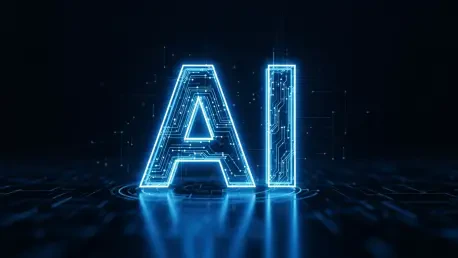Setting the Stage for AI Management Evolution
In today’s fast-paced enterprise landscape, a staggering reality emerges: despite the promise of artificial intelligence to revolutionize operations, many organizations struggle to translate hype into tangible results, creating a significant gap between potential and practice. With AI agents positioned at the peak of inflated expectations, as noted in Gartner’s Hype Cycle, disillusionment looms large among business leaders seeking practical applications. This challenge is critical for industries striving to harness AI’s power. Visual orchestration, an innovative approach to managing AI systems, emerges as a potential game-changer, offering clarity and control in a field often clouded by complexity and skepticism.
This report dives deep into the transformative role of visual orchestration in AI management, exploring how it bridges theoretical promise with operational success. By focusing on visibility and intuitive design, this strategy aims to empower enterprises to integrate AI agents seamlessly into their workflows. Through an examination of key players, emerging trends, and future prospects, the following sections uncover how visual orchestration is reshaping the enterprise AI landscape.
Understanding Visual Orchestration in AI Management
Visual orchestration represents a strategic method for overseeing AI agents within enterprise settings, providing a structured framework to design, monitor, and scale automation processes. Unlike traditional approaches that often obscure underlying mechanisms, this method emphasizes intuitive interfaces that allow users to visualize and interact with complex systems. By offering a clear line of sight into AI operations, it addresses a critical need for transparency in environments where trust in technology remains fragile.
The significance of visual orchestration lies in its ability to close the divide between AI’s vast potential and its practical deployment. Amid widespread industry skepticism—fueled by overpromising and underdelivering—enterprises crave solutions that deliver measurable outcomes. Visual tools serve as a bridge, enabling businesses to demystify AI processes and align them with operational goals, thus fostering confidence in adoption.
Key players like Make, a prominent low-code automation vendor, stand at the forefront of this shift by pioneering visual tools tailored for AI integration. Their platforms empower users to manage AI agents through accessible, user-friendly designs. Meanwhile, Gartner’s Hype Cycle indicates that AI technologies are currently riding a wave of inflated expectations, suggesting that practical solutions like visual orchestration are timely and necessary to guide enterprises through the inevitable trough of disillusionment toward sustainable implementation.
Key Trends and Innovations in Visual Orchestration
Emerging Trends Shaping AI Management
A notable shift in the industry reveals a growing preference for visual interfaces to navigate the intricacies of AI technologies. As enterprises wrestle with the opaque nature of many AI systems, the demand for tools that offer clear, graphical representations of workflows and decision-making processes has surged. This trend underscores a broader push for simplicity in managing sophisticated technologies, ensuring that stakeholders at all levels can engage with AI without needing deep technical expertise.
Skepticism surrounding AI hype further fuels the call for transparent, actionable solutions. Many organizations, having encountered unfulfilled promises, now prioritize approaches that demonstrate clear value over flashy innovation. Visual orchestration aligns with this sentiment by providing a tangible way to track and adjust AI behaviors, countering doubts with visibility and fostering trust among users wary of black-box systems.
Additionally, there is a marked trend toward integrating AI into existing automation frameworks rather than deploying standalone solutions. This approach minimizes disruption by leveraging familiar systems, allowing AI to enhance rather than overhaul established processes. Coupled with the rising need for human-AI collaboration through natural language and visual tools, the industry is witnessing a pivot toward co-creation models that balance technological advancement with human oversight.
Make’s Innovations and Market Impact
Make’s visual orchestration framework stands out with its focus on three core pillars: building, accelerating, and scaling automation. This structured approach integrates AI agents into a cohesive visual language, enabling users to craft automations with ease while maintaining control over complex interactions. Their tools are designed to lower entry barriers, making AI management accessible to a broader range of enterprise users.
Specific innovations such as the Scenario Builder, which facilitates agent creation with real-time guidance, and MAIA, a conversational interface for human-AI interaction, highlight Make’s commitment to practical utility. Additionally, Make Grid offers enterprise-scale coordination through an interactive map of automation landscapes, addressing the challenge of managing dependencies at scale. These tools collectively enhance transparency and strategic oversight, distinguishing Make in a crowded market.
Market response to these innovations has been notably positive, with growing enterprise confidence and strong community engagement following Make’s acquisition by Celonis. Beta testers and industry attendees have expressed enthusiasm for the actionable nature of these solutions. Looking ahead, Make’s emphasis on visibility-driven tools positions it as a formidable player in the competitive AI management arena, likely to influence broader industry standards for integration and scalability.
Challenges in Implementing Visual Orchestration for AI
Integrating visual orchestration into existing enterprise systems presents significant hurdles, particularly around technological compatibility and user adaptation. Many organizations operate on legacy infrastructures that may not readily support modern visual tools, necessitating substantial upgrades or customizations. Furthermore, the learning curve associated with adopting new interfaces can deter staff accustomed to conventional methods, slowing down implementation timelines.
Another pressing challenge lies in balancing innovation with governance. As enterprises scale AI deployments using visual orchestration, ensuring transparency and accountability becomes paramount. Without robust oversight mechanisms, the risk of unchecked AI behaviors or misaligned outcomes grows, potentially undermining trust in the technology. Striking this balance requires careful design to embed control mechanisms within visual frameworks without stifling creativity or efficiency.
Resistance from users familiar with traditional automation approaches also poses a barrier. Skepticism toward change can hinder adoption, especially if the benefits of visual tools are not immediately evident. To address these challenges, strategies such as comprehensive user training, phased implementation to ease transitions, and strong support systems for troubleshooting are essential. These measures can help build confidence and demonstrate the long-term value of visual orchestration in AI management.
Regulatory and Compliance Considerations
The regulatory landscape surrounding AI management remains a critical factor, with stringent data privacy and security standards shaping enterprise strategies. Laws and guidelines, such as those related to data protection, demand that AI systems operate within strict boundaries to safeguard sensitive information. Visual orchestration must therefore prioritize features that enable compliance, ensuring that data handling and processing are transparent and auditable.
Transparency and control are vital components of meeting these regulatory requirements. Visual tools offer a unique advantage by allowing enterprises to monitor AI activities in real time, providing clear documentation for audits and compliance checks. Platforms like Make Grid enhance this capability by offering a comprehensive overview of automation landscapes, facilitating adherence to guidelines through structured oversight.
As regulations continue to evolve, their impact on the adoption and scalability of visual orchestration solutions cannot be overlooked. Emerging policies may introduce new constraints or opportunities, influencing how enterprises deploy these tools. Staying ahead of such changes requires proactive adaptation, ensuring that visual orchestration platforms remain flexible enough to accommodate future compliance demands while maintaining their core functionality.
Future Outlook for Visual Orchestration in AI Management
Visual orchestration is poised to become a cornerstone of AI management, offering a sustainable path to integrate advanced technologies into enterprise operations. As businesses increasingly recognize the value of visibility in navigating AI complexities, this approach is likely to gain traction as a standard for automation strategies. Its ability to simplify intricate processes positions it as a vital tool for long-term success.
Emerging technologies, such as advanced machine learning models and augmented reality interfaces, could further enhance visual orchestration by adding layers of interactivity and precision. However, potential disruptors, including competing methodologies or unforeseen regulatory shifts, may challenge its dominance. Staying adaptable to such dynamics will be crucial for vendors and enterprises alike to maintain relevance in a rapidly changing landscape.
Global economic conditions, industry-specific needs, and continuous innovation will also shape the growth and adoption of visual orchestration. The escalating demand for enterprise-scale coordination, coupled with a focus on human-AI collaboration, suggests that future developments will prioritize tools that blend scalability with user-centric design. Monitoring these factors will provide valuable insights into how visual orchestration can evolve to meet tomorrow’s challenges.
Reflecting on Insights and Path Forward
Looking back, the exploration of visual orchestration revealed its profound impact on addressing the practical challenges of AI management within enterprises. The emphasis on visibility-driven solutions, as championed by innovators like Make through tools such as Scenario Builder, MAIA, and Make Grid, marked a significant step in demystifying AI for broader adoption. This approach tackled industry skepticism head-on, offering a grounded framework that aligned with real-world needs.
Moving forward, enterprises should consider strategic investments in visual tools to enhance transparency and maintain control over AI deployments. Prioritizing platforms that facilitate human-AI collaboration will be key to fostering trust and efficiency in workflows. Additionally, staying attuned to regulatory shifts and emerging technologies can help organizations anticipate changes, ensuring that visual orchestration remains a resilient and adaptable solution for future automation and AI integration endeavors.








